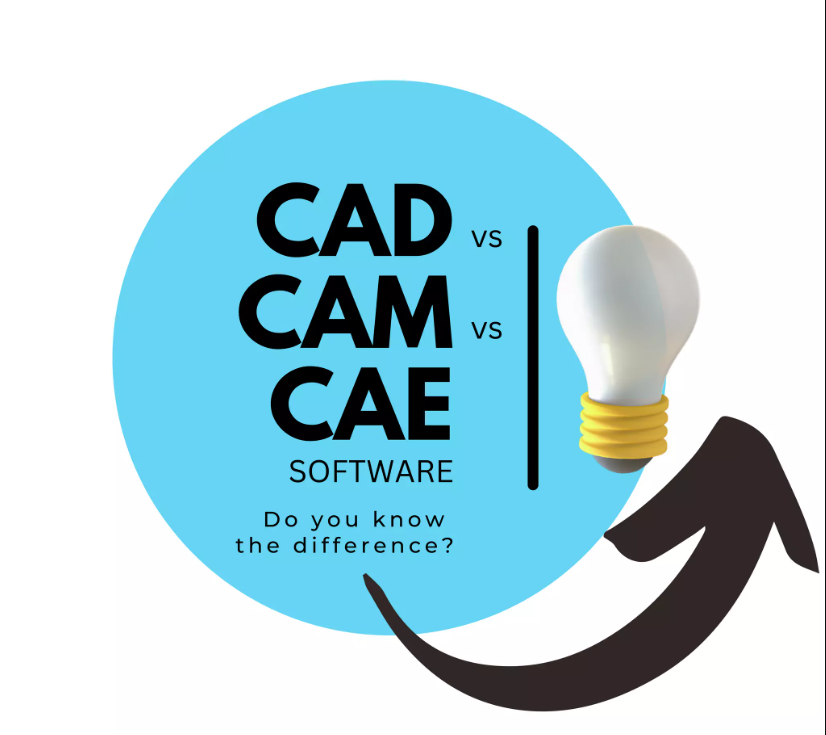CAD (Computer-Aided Design), CAE (Computer-Aided Engineering), and CAM (Computer-Aided Manufacturing) are three distinct but interconnected technologies used in various industries, particularly in engineering and manufacturing. While they serve different purposes, they work together to streamline the product development process. Here’s a breakdown of the differences between CAD, CAE, and CAM:
CAD (Computer-Aided Design):
CAD refers to the use of computer software to create, modify, analyze, and optimize designs for products or parts. Designers and engineers use CAD software to produce detailed 2D or 3D models of components, assemblies, and systems. These models can range from simple geometric shapes to complex mechanical structures.
Best CAD Software for Engineers
Which CAD software tool is used can vary based on an engineer’s specialty, the industry they work in or specific employer requirements. There are a variety of highly specialized tools, with some software designed for specific industries. A few of the popular CAD tools for professional engineers include:
AutoCAD
Inventor
CATIA
Fusion 360
NX Core Designer
SolidWorks
Creo 10
Key features of CAD include:
Precise modeling: CAD software allows for precise geometric modeling, enabling engineers to create accurate representations of physical objects.
Visualization: CAD models provide realistic visualizations of designs, helping stakeholders visualize the final product before production begins.
Collaboration: CAD facilitates collaboration among team members by allowing them to share and review design files electronically.
Iterative design: CAD software supports iterative design processes, allowing engineers to make modifications and improvements to designs quickly and efficiently.
CAE (Computer-Aided Engineering):
CAE involves the use of computer simulations and analysis tools to evaluate the performance, reliability, and safety of engineering designs. It allows engineers to predict how a product will behave under various conditions and identify potential issues before physical prototypes are built.
CAE Software Leaders
There are dozens of CAE software tools used within the field of engineering. A few of the leaders include:
Ansys Fluent
NX Advanced Simulation
SimScale
Inventor
HyperWorks
LS-DYNA
Matlab Simulink
Key features of CAE include:
Structural analysis: CAE software can simulate the structural behavior of components and assemblies under different loads, such as stress, strain, and deformation.
Thermal analysis: CAE tools can analyze heat transfer and thermal stresses within a system, helping engineers optimize designs for thermal management.
Fluid dynamics: CAE software can simulate the flow of fluids, such as air or water, through a system, allowing engineers to optimize the performance of pumps, valves, and other fluid-handling components.
Optimization: CAE tools enable engineers to optimize designs by identifying areas for improvement and iteratively refining them to meet performance goals.
CAM (Computer-Aided Manufacturing):
CAM involves the use of computer software to control and automate manufacturing processes, such as milling, turning, and machining. It translates CAD models into instructions for machine tools, allowing for the efficient production of physical parts.
Best CAM Software
Because CAM is so intertwined with CAD, some software companies produce both types of applications. SolidWorks, for example, offers a full-suite of tools for CAD, CAM and other engineering processes. Similarly, companies like AutoDesk offer combined CAD and CAM tools. Some of the leaders in CAM software include:
Solidworks CAM
Fusion 360
NX CAM
SolidEdge
CAMWorks
Mastercam
Key features of CAM include:
Toolpath generation: CAM software generates toolpaths that guide the movement of cutting tools across workpiece surfaces, ensuring precise machining operations.
Optimization: CAM tools optimize machining processes by minimizing material waste, reducing cycle times, and maximizing tool life.
Simulation: CAM software can simulate machining operations to detect potential collisions, tool deflections, and other issues that may arise during production.
Integration: CAM systems can be integrated with CAD and CAE software to streamline the transition from design to manufacturing, reducing errors and speeding up the production process.
CAD vs. CAM vs. CAE: How Familiarity Helps Your Career
Most engineers will benefit from exposure to CAD and CAE software tools, but they should also be familiar with CAM. Knowledge of how CAD and CAM software interact can help to make improvements in the design and analysis phase of planning products and structures.
Engineers whose work is focused on seeing the big picture, such as optimizing systems or managing engineering teams, can especially benefit from building familiarity across all three types of software.
In summary, while CAD focuses on design creation and visualization, CAE focuses on engineering analysis and simulation, and CAM focuses on manufacturing automation and optimization. Together, these technologies form an integrated workflow that accelerates product development and improves overall efficiency in engineering and manufacturing industries.

